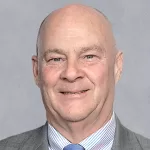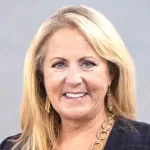Getting the Message Across

Marketing and communications in 2024 are evolving further, with no signs of slowing down. The year ahead promises groundbreaking shifts, from artificial intelligence revolutionizing marketing and user engagement to big brands capitalizing on social media’s bite-sized content for enhanced product exposure. Add to this the rise of immersive digital experiences, and you have a transformative landscape. Here’s what the experts at the integrated marketing agency 9Rooftops have to say:
Creative Shifts: Renewed Nostalgia and Inspiration
By Scott Seymour
Adaptable Personalization: With advancements in customization and AI workflows, new opportunities arise to resonate in ways we never thought possible. People will have the freedom to consume content tailored specifically for them. The ability to create adaptable creative to match someone’s current mood or their desired need state is worth exploring. Then, having the design expressed in a way that is completely in sync with their personal aesthetic preferences will be incredibly valuable.
Minimalism and Decluttering: Now more than ever, with massive amounts of information coming at us at any given moment, a movement toward simplification is welcomed. Reducing clutter throughout all aspects of our lives, including incoming communications, allows people to truly focus on what matters most without unnecessary distractions. Carefully curated content and purposeful design choices will genuinely deliver on the principle that less is more.
“With advancements in customization and AI workflows, new opportunities arise to resonate in ways we never thought possible.”
Fantastical Inspiration: Sparked by AI image generation and fueled by possibility, we anticipate an acceleration of surreal, fantastical styles that provoke a sense of wonder and escapism. A hyper-real utopian aesthetic blurs the lines between reality and imagination. With this extraordinary style of captivating imagery, surreal illumination, and dreamlike color palettes, they will continue to delight and defy reality.
Rise of Kindness: Acts of kindness uplift people when they need it most. Brands that tap into this concept will deepen connections with their consumers in new ways. This will promote empathy, fostering a sense of gratitude that can be contagious.
Nostalgia Reimagined: Fueled by a need for authenticity, optimism, and a desire for what’s next, a foundation of shared nostalgic cultural connections, themes, and designs will create stronger social bonds. Blending this charm with a modern twist will keep things fresh and interesting.
Social Media Shifts: Connecting Through Social-first Tactics
By Julia Repisky
TikTok: It’s no surprise that this social-media platform will continue to reign; in fact, TikTok is anticipated to increase its user base to 900 million, an 8% increase, so being active is more paramount than ever in 2024, especially as the audience continues to diversify beyond just kids.
Bite-sized Content: Short, easily digestible content led TikTok and Instagram reels to their huge success, especially as attention spans continue to shrink. People want content they can consume in seconds, and your brand should be able to deliver that in an authentic way.
SEO on Social: Gen Z and Millennials rely on social for more than entertainment. About 40% of young adults between 18 and 24 use social media like a search engine, meaning you’ll need to go beyond just hashtags to hit the right keywords to make your social presence known.
Hybrid, AI Content: The AI buzz won’t calm down anytime soon and will become an integral part of social-media content creation, whether to help with inspiration, optimize content, or create something completely new. Don’t be afraid to play around with what AI can help you do.
Raw, Authentic Content: Social media isn’t the place for polished product placement anymore. Users don’t want perfection, but a feed full of relatable, highly (or even completely) unedited content that feels natural. In 2024, aim for less overanalyzing and creating more content in the moment.
Customer Relationship Management: Emerging Patterns and Insights
By Jenny Brenner
Decisioning and Personalization Relevancy: This has always been a key driver in connecting effectively with prospects and customers, and with new AI tools aiming to decrease technical barriers, automate, and ease integration, anticipate an even higher baseline for personalized product offerings, content, and communications in the marketplace. Revisit your personalization capabilities to ensure you’re scoring and maximizing output across transactional, behavioral, and situational data.
Zero-Party Data Campaigns: They’re not going anywhere, gaining popularity in 2023 as an initial outcome of cookie-deprecation announcements. Expect brands to continue to take advantage of these for turnkey data collection and application, which are well-suited for on-the-fly personalization, situational and environmental touchpoints, and driving conversion-rate optimization results.
Interactivity: In an increasingly digital environment, it’s even more challenging for brands to break through the clutter in inboxes and experiences. Increasing the interactivity of your digital touchpoints, from email to MMS/SMS, can help significantly boost engagement and results. Make interactive features and formats, like GIFs, quizzes, and countdown clocks a regular part of your digital brand experience to engage customers and deliver offers and content in a unique and memorable way.
Experiential Rewards: Engaging loyalty-program members requires a blend of transactional and emotional benefits. While transactional benefits — discounts, offers, points — can drive direct replenishment and purchase retention, incorporating experiences, whether gamified or as exclusive rewards, can drive brand differentiation, preference, and loyalty. Pilot a gamified or exclusive experiential element in your loyalty program to spark member interest and engagement.
“In an increasingly digital environment, it’s even more challenging for brands to break through the clutter in inboxes and experiences.”
Prioritizing Customer Key Performance Indicators (KPIs): Increases in consumer privacy policy will continue into 2024, and as key platforms and providers decrease the amount of data shared back to marketers, brands need to find alternative measurement solutions across digital ecosystems. Prioritize defining, regularly calculating, and placing weight on customer-centric metrics alongside campaign KPIs in 2024 to provide a bigger picture of your campaign’s impact on ultimate goals: changing key behaviors and growing customer lifetime value.
Experience Marketing: Transformational Engagement
By Kate Bradbury
Immersive Digital Experiences: The introduction of the Sphere in Las Vegas has sparked a ton of excitement around the power of immersive artistic experiences where visual, sound, and physical form all come together in awe-inspiring ways. Advances in technology have made production more flexible and affordable for smaller-scale events. Moreover, discussing experiential marketing ROI through data science remains a way forward to measure results for a diversity of experience marketing strategies.
Scalable and Reusable: Efficient execution and long-term thinking around event assets will be critical as larger economic trends put pressure on marketing budgets. Creating event platforms that can scale up and down and reusable assets can help stretch marketing dollars. Plus, reusable assets help make events more sustainable.
Tech-powered Personalization and Customization: AI has seen a rapid technological increase and adoption rates. We think AI will enhance targeting and customization exponentially, allowing marketers to build dynamic experiences precisely tailored to their consumers from beginning to end. AI will also allow for consumer-driven, personalized experiences.
Exclusivity: FOMO (fear of missing out) is real, and post-COVID consumers are again placing an emphasis on gathering once-in-a-lifetime-style memories and experiences. Highly curated events with a level of exclusivity are a perfect fit for the right brand and can be magnified via an influencer approach.
“Online shopping is more convenient than ever, so if people are going to spend time going to a store, they want something special.”
Experiential Retail and Pop-ups: Online shopping is more convenient than ever, so if people are going to spend time going to a store, they want something special. Creating unique experiences with the full transformation of spaces or launching memorable pop-up shops are ways for brands to stand out. These dynamic and bespoke experiences help drive social sharing, additional brand impressions, and customer loyalty.
Digital Experience: Advancements in Personalization and AI
By Patti Mulligan
Hyper-personalization: As the practice of being treated as a unique individual increases loyalty, the demand for personalized experiences will continue to grow. AI will be increasingly reliant on analyzing customer data to facilitate these experiences. In fact, AI will offer real-time personalization of user experiences, which may result in immediate data analysis. An AI algorithm will immediately analyze a user’s actions on platforms, including clicks, navigation, and internal search queries, and adjust the website page’s products.
Sustainability: Developers will focus on improving performance of digital solutions, requiring less from servers and networks. There is a general concern across the spectrum of designers, developers, users, and customers who are committed to social responsibility and the environmental impacts of their experiences and products.
AI Integration: This is an obvious trend that is only gaining traction from development tools for more efficient coding to image generation and behavior insights. In fact, by 2030, the global revenue forecast for AI is projected to reach a mind-numbing $1.3 billion. Every big brand is traversing the AI landscape, including Google’s generative AI search experience. In theory, this will result in more data-driven designs that revolve around user insights.
Immersive Experiences: AR and VR will grow in usage and popularity and will be used increasingly to enable product interactions that are key to encouraging customer loyalty. Future evolutions will allow for virtual stores, enhanced product visualizations and experiences, and interactive product demonstrations. AR already enables virtual try-ons, which allows users to see how products look on them with their smartphones, helping encourage more confidence in the purchase process. Moreover, AR personalization allows you to see if that sofa looks right in your living room, or if that hat you found online will match your sport coat. Expect all these examples to evolve and expand into more consumer use cases.
Accessibility: A timeless requirement rather than a trend, accessibility should never fall out of the limelight. With one in four Americans having a disability, it is imperative for all users to be able to access websites. By implementing ADA guidelines, the benefits to companies are great as accessibility fosters inclusivity and quality, expands audiences, builds brand image and reputation, and prevents costly litigation.
The Creator Economy: New Influences
By Pamela Pacheco
Brand and Influencer Collaborations: Influencer marketing has become an integral part of brand promotion. In a 2023 Influencer Marketing Hub survey, an overwhelming 83% of respondents said they believe influencer marketing continues to be effective. Now, brands are taking it a step further by collaborating with influencers to create new products. This approach enables brands to leverage the influencer’s creativity and knowledge of their audience, resulting in more authentic products for their target audience. It also generates greater engagement and loyalty among consumers. This mutually beneficial collaboration between brands and influencers has proven to be effective in enhancing the overall success of marketing campaigns and will continue to evolve during 2024.
Social Commerce: In 2024, the alliance between influencer marketing and social commerce is set to rewrite the rules of online shopping. As the annual average social commerce sales per buyer is projected to grow 21.3% (according to an eMarketer report) this year and social media platforms like TikTok, Instagram, and YouTube continue to incorporate shopping features, influencers will act as the center, providing first-hand product reviews, live demonstrations, and real-time purchasing guidance to their audiences. This trend will enhance the shopping experience and offer brands a dynamic way to reach and convert consumers directly within their favorite social platforms.
“In a fun twist, employees are stepping into the spotlight as new influencers, leveraging their connection to the brand’s values and culture to cultivate deeper trust and engagement with consumers.”
Brand Employees Become Influencers: As this industry continues to evolve, brands are recognizing the potential within their staff. In a fun twist, employees are stepping into the spotlight as new influencers, leveraging their connection to the brand’s values and culture to cultivate deeper trust and engagement with consumers. Employees turned influencers will be encouraged to share their experiences, opinions, and knowledge about the brand to create authentic content that fosters deeper connections with consumers. So how are brands selecting these employees? They look for employees who are active on social media, have a considerable following, and possess strong communication skills. Now, anyone from the CEO to a sales associate can become a brand ambassador.
Macro- and Micro-Influencers Combine: The combination of macro- and micro-influencers will become a popular strategy for brands looking to diversify their audience reach and engagement in the world of influencer marketing. Macro-influencers typically have a larger following and higher social-media reach, while micro-influencers are more relatable and have a more niche following, which can result in higher engagement rates. By combining both types of influencers, brands can create a marketing campaign that appeals to a wide range of consumers and generates a higher level of engagement and loyalty.
Community-centric Influence: Influencers will shift their focus from chasing follower counts to nurturing social communities. This trend emphasizes meaningful engagements, discussions, and immersive experiences within niche communities, reshaping the influencer landscape.
Scott Seymour is executive vice president and chief creative officer, Julia Repisky is senior content and social media strategist, Jenny Brenner is group director of digital strategy and CRM solutions, Kate Bradbury is managing director, Patti Mulligan is vice president and director of digital experience, and Pamela Pacheco is senior social media strategist at 9Rooftops.

















 “Where residents live in Massachusetts should not determine their mobility or access to opportunity.”
“Where residents live in Massachusetts should not determine their mobility or access to opportunity.”
 Massachusetts has created various public programs for certain diverse business enterprises to address this issue, such as the state’s certification program through the Supplier Diversity Office (SDO).
Massachusetts has created various public programs for certain diverse business enterprises to address this issue, such as the state’s certification program through the Supplier Diversity Office (SDO). “Outsourcing your business’s accounting function provides considerable benefits beyond number crunching. It allows owners to devote more time and resources to core business functions like strategic growth and nurturing customer relationships, which are crucial for long-term success.”
“Outsourcing your business’s accounting function provides considerable benefits beyond number crunching. It allows owners to devote more time and resources to core business functions like strategic growth and nurturing customer relationships, which are crucial for long-term success.”

 “Standard deduction amounts for 2024 have been inflation-adjusted and are higher than they were last year.”
“Standard deduction amounts for 2024 have been inflation-adjusted and are higher than they were last year.”


 A UMass Amherst sleep scientist, funded with $6.7 million in grants from the National Institutes of Health (NIH), has launched two unprecedented studies that will track over time the brain development of infants and preschoolers to confirm the role of napping in early life and to identify the bioregulatory mechanisms involved.
A UMass Amherst sleep scientist, funded with $6.7 million in grants from the National Institutes of Health (NIH), has launched two unprecedented studies that will track over time the brain development of infants and preschoolers to confirm the role of napping in early life and to identify the bioregulatory mechanisms involved.










 “As planners, these changes often prompt investigating alternative ways to pass on wealth earlier to heirs, including layering in additional diversification with investments spread between retirement accounts, Roth IRA/401(k) plans, and non-retirement assets.”
“As planners, these changes often prompt investigating alternative ways to pass on wealth earlier to heirs, including layering in additional diversification with investments spread between retirement accounts, Roth IRA/401(k) plans, and non-retirement assets.”



 “Many people today do not have access to pensions like the generation before us. So that means investing early and wisely is paramount to building the wealth needed to achieve your retirement dreams.”
“Many people today do not have access to pensions like the generation before us. So that means investing early and wisely is paramount to building the wealth needed to achieve your retirement dreams.”








 “Generally, anti-harassment training is a helpful addition the employer’s tool chest for preventive measures against discrimination and harassment.”
“Generally, anti-harassment training is a helpful addition the employer’s tool chest for preventive measures against discrimination and harassment.”

 Last month, the U.S. Department of Labor (DOL) issued a final rule that provides businesses with guidance to be used when evaluating whether a worker should be classified as an employee or an independent contractor under the Fair Labor Standards Act (FLSA). The DOL is also expected to issue a final rule that will extend overtime protections to an estimated 3.6 million salaried workers who are currently exempt under the law. Read on for more details about both of these developments.
Last month, the U.S. Department of Labor (DOL) issued a final rule that provides businesses with guidance to be used when evaluating whether a worker should be classified as an employee or an independent contractor under the Fair Labor Standards Act (FLSA). The DOL is also expected to issue a final rule that will extend overtime protections to an estimated 3.6 million salaried workers who are currently exempt under the law. Read on for more details about both of these developments.
